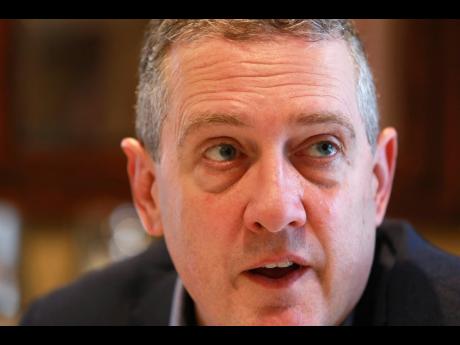How a central banker’s low-rate shift showed the way for Fed
In mid-2016, even with unemployment falling and the economy growing modestly, James Bullard, head of the St Louis Federal Reserve Bank, was concerned.
Months earlier, with Bullard’s support, the Fed had raised rates for the first time in seven years. Panicky financial markets responded by sending stocks tumbling. The Fed delayed plans for further rate hikes. Through it all, there was still no sign of higher inflation – the supposed bogeyman that had led the Fed to raise rates in the first place.
“We were expecting inflation to pick up,” Bullard acknowledged in an interview this month. “We had the idea that we should be pre-emptive and prevent that from happening. But a lot of those predictions didn’t come true. So that made me think that we didn’t have the right framework.”
Bullard decided to develop a new framework, which he announced in June 2016. It was based on a notion that Bullard was among the first Fed officials to fully recognise: that the US economy was stuck in a rut, with low growth and low worker productivity, and wouldn’t likely spark high inflation even if unemployment kept falling.
It’s a notion that members of the Fed’s rate setting committee, including Chairman Jerome Powell, have come to collectively embrace. It helps explain why Powell has made clear, as recently as this week, that he sees no need to raise rates anytime soon despite an unemployment rate near a 50-year low.
Bullard’s framework flew in the face of a long-standing belief among economists that as unemployment falls steadily, employers will keep raising wages and high inflation will follow. Casting aside such traditional economic models, Bullard felt that the economy could keep growing and employers could keep hiring without igniting inflation. He argued that the Fed would probably need to raise rates only once more, to a range of just 0.5 per cent to 0.75 per cent.
That view, highly unusual three years ago, transformed Bullard from a centrist member of the Fed’s policymaking committee to one of the more dovish. (‘Doves’ typically worry less about inflation and more about sustaining growth and employment; ‘hawks’ generally favour higher rates to control inflation.)
Most Fed policymakers at that time worried that the unemployment rate – five per cent in December 2015 – was low enough that it would likely accelerate wages and inflation. They wanted to lift the Fed’s benchmark short-term rate closer to its historical norms after seven years of holding it at zero. The consensus then was that a rate as high as 3.5 per cent would still be ‘neutral’: That is, it would neither support nor restrain growth.
And yet, since late last year, the Fed has shifted much closer to Bullard’s position. Powell has engineered three rate cuts since July, to a range of just 1.5 per cent to 1.75 per cent. These cuts followed four rate hikes last year.
To a large extent, the U-turn reflected worries among Fed policymakers that US President Donald Trump’s trade war with China was weakening the economy and that this threat would worsen over time. The rate cuts were intended to offset that drag.
But Powell has also indicated that the policy switch occurred, in part, because the Fed has abandoned or revamped models that correlated low unemployment with high inflation. Most economists agree that this correlation has largely disappeared, at least for now. Online retail and price-conscious consumers have made it harder for many companies to charge more. And with labour unions a diminished force, workers can’t push for higher pay so easily.
“There was a tight connection between unemployment and inflation,” Powell told Congress this month. “That is no longer the case and really hasn’t been the case for some time.”
AP

